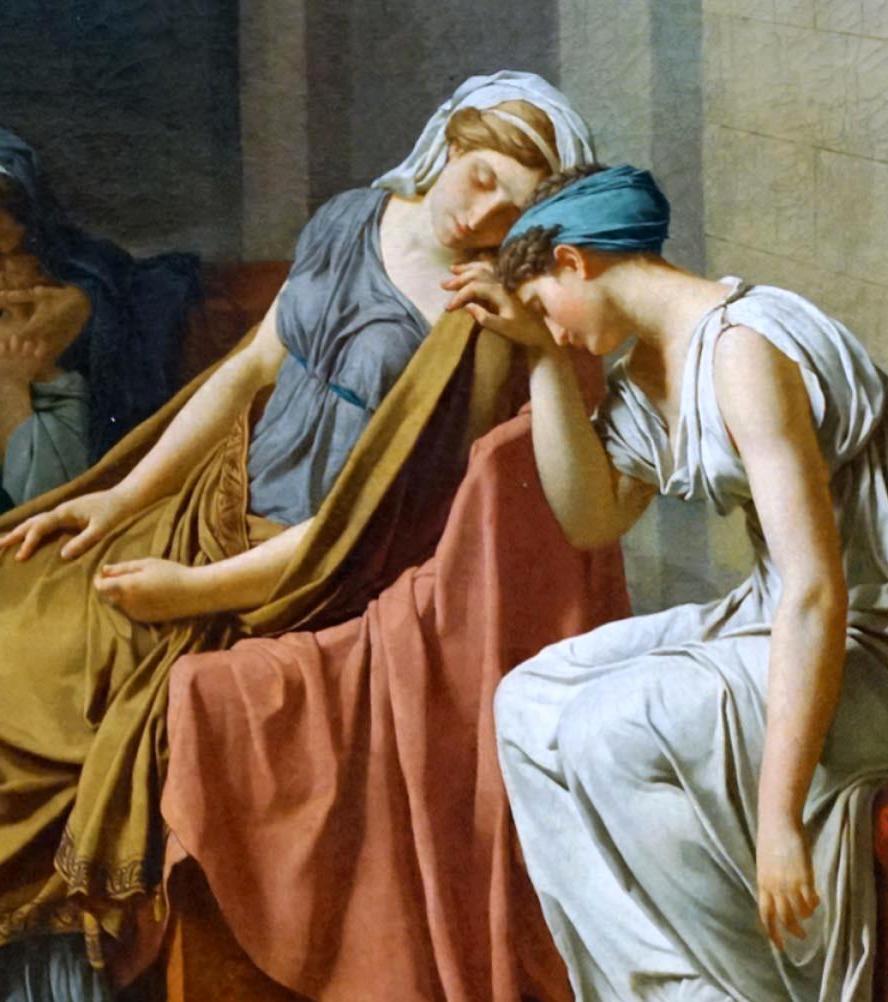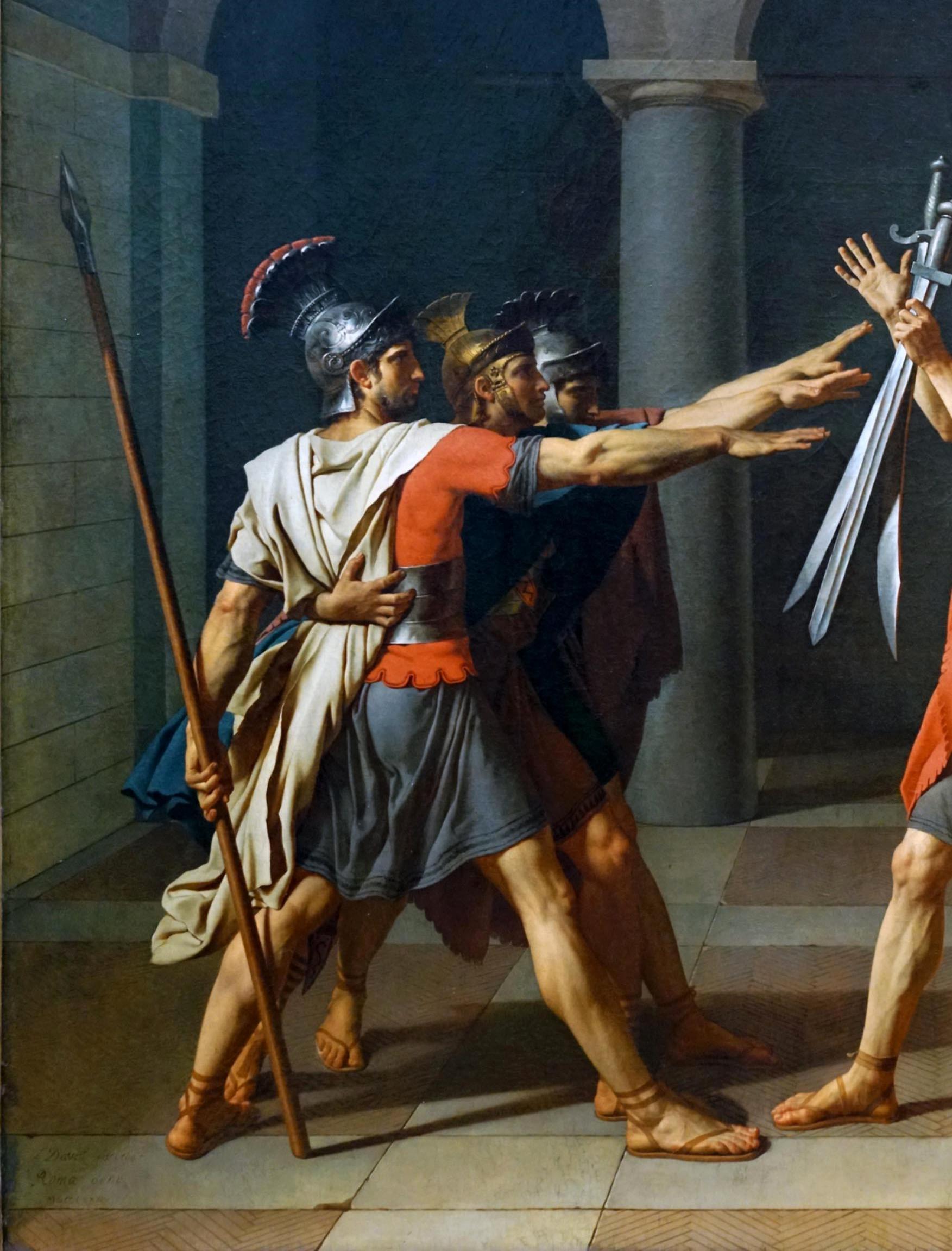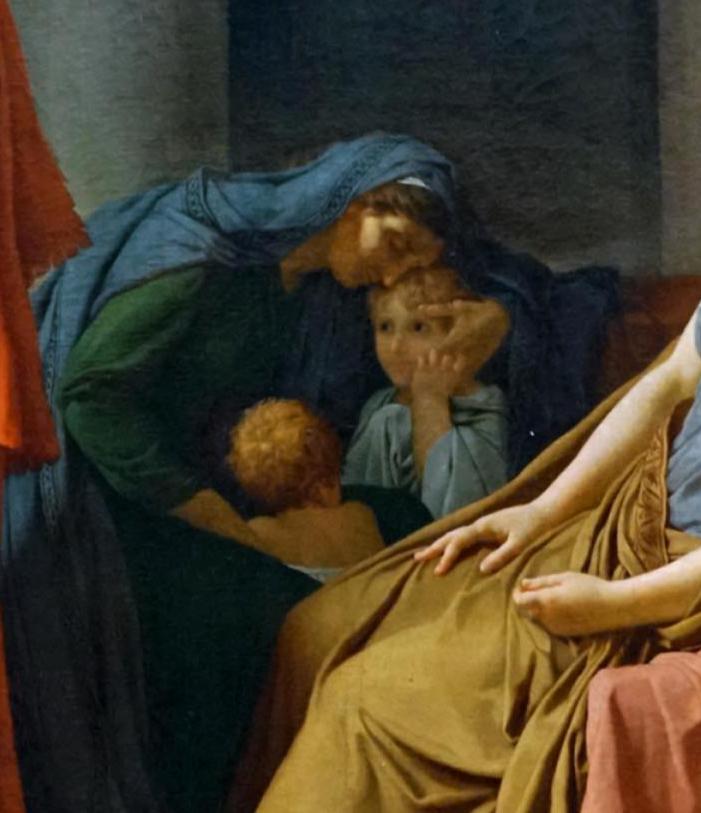The Oath of the Horatii, By Artist Jacques-Louis David (1748–1825)
" The Oath of the Horatii " was a watershed moment not just in Jacques-Louis David's art, but in European painting as a whole. The artwork helped to birth a new style, founding the French neoclassicism school.
If the "feminine universe" with its curving lines dominated 18th-century painting, it was now giving way to the verticals of the "masculine world," emphasizing the prominent role of valor, heroism, and military service. David acquired recognition across Europe with this canvas.
"The Oath of the Horatii" exposes the terrible and irreconcilable tensions between civic obligation and personal sentiments of people. The narrative of the film is based on an ancient Roman legend. During Rome's conflict with Alba Longa, three Romans, brothers from the Horatii family, were forced to fight a death combat to determine the conclusion of the dispute between the warring towns. The Horatii's opponents are childhood buddies. One of them is in a relationship with the Horatii's sister. As they prepare for a fatal fight, the brothers swear a promise to their father to safeguard the fatherland. They are unwavering and steadfast in their lofty motivation, which is reinforced by the uniformity of vast dynamic motions. The achievement is blessed by the Father.
Friends discouraged Jacques-Louis David from pursuing this plan, which, in their judgment, did not fit the attitude of the moment. Jacques-Louis David said that he would chose the moment before the war when old Horace accepts an oath from his son to win or die - a moment that the artist could only guess at due to the lack of specifics.
Jacques-Louis David employed a number of classical approaches. The painting's backdrop is darkened, but the characters in the front are emphasized to emphasize their importance. Dull colors are employed to emphasize the importance of the tale being depicted above the painting itself. The number "three" and the triangle are represented by a clear and distinct composition. Clear features are preferred over the light strokes associated with Rococo. Only women display strong emotions, while men perform their duties.
The painting was submitted to the Paris Salon, and David was concerned that he would be put in an unfavorable position owing to the machinations of his haters. However, the concerns were baseless. "The Oath of the Horatii" was well appreciated by the general audience.
The painting is part of the Louis XVI collection and is now on display in the 75th chamber on the first floor of the Louvre's Denon Gallery.
 |
The Oath of the Horatii, Jacques-Louis David (1748–1825) 1784 Oil on canvas. Size: 330 × 425 cm Louvre, Paris |









No comments:
Post a Comment